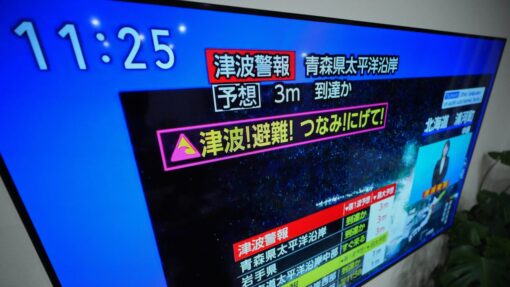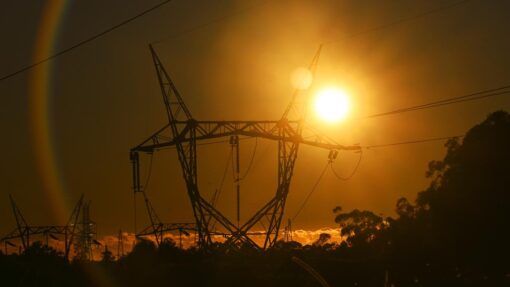Russia strikes Ukraine with deadly hypersonic missiles
Pavel Polityuk and Andriy Perun |
Russia has fired a huge wave of missiles across Ukraine as people slept, killing at least nine civilians and knocking out power in an attack Kyiv says included six Kinzhal hypersonic cruise missiles, one of Moscow’s most valuable weapons.
The first such mass attack on targets far from the front since mid-February shattered the longest calm since Moscow began an air campaign against Ukraine’s civil infrastructure five months ago.
The attack also briefly forced Europe’s biggest nuclear power plant off the grid.
“The occupiers can only terrorise civilians. That’s all they can do. But it won’t help them. They won’t avoid responsibility for everything they have done,” Ukrainian President Volodymyr Zelenskiy said, describing strikes that hit infrastructure and residential buildings in 10 regions.
Russia’s defence ministry said it had carried out a “massive retaliatory strike” as payback for a cross-border raid last week.
It claimed to have hit all its intended targets, destroying drone bases, disrupting railways and damaging facilities that make and repair arms.
In the capital Kyiv, a seven-hour alert through the night was the longest of Russia’s five-month air campaign.
Moscow says such hits are intended to reduce Ukraine’s ability to fight.
Kyiv says the air strikes have no military purpose and aim to harm and intimidate civilians, a war crime.
Moscow confirmed it had used hypersonic Kinzhal – Russian for dagger – missiles in Thursday’s attack.
Ukrainian officials said it was the first time they had faced so many of the weapons, which Ukraine has no way to shoot down.
The White House said the barrage was “devastating” to see and Washington would continue to provide Ukraine with air defence capabilities.
Russia is believed to have just a few dozen Kinzhals, which fly many times faster than the speed of sound and are built to carry nuclear warheads with a range of more than 2000km.
In his speeches, President Vladimir Putin regularly touts the Kinzhal as a weapon for which the transatlantic NATO alliance backing Kyiv has no answer.
Ukraine said the attacks had knocked out power in various places including the Zaporizhzhia nuclear power plant, Europe’s largest, severing it from the grid and forcing it onto emergency diesel power to prevent a meltdown.
It was later reconnected to Ukraine’s energy grid, operator Ukrenergo said.
The plant, which Russia has held since capturing it early in the war, is near the front line and both sides have warned in the past of a potential for disaster.
Moscow said it was safe.
United Nations nuclear watchdog chief Rafael Grossi appealed for a protection zone around the plant.
“Each time we are rolling a dice and if we allow this to continue time after time then one day our luck will run out,” Grossi told the IAEA’s 35-nation Board of Governors.
Kyiv, the Black Sea port of Odesa and Kharkiv were all hit.
Targets stretched from Zhytomyr, Vynnytsia and Rivne in the west to Dnipro and Poltava in central Ukraine, officials said.
On the battlefield, the week has seen an apparent shift as Ukraine has decided to fight on in Bakhmut, a small city that has borne the brunt of a Russian winter offensive in the bloodiest fighting of the war.
Moscow says Bakhmut is important as a step to securing the surrounding Donbas region, a major war aim.
The West says the ruined city has little value and Russian forces are sacrificing lives to give Putin his only victory since sending hundreds of thousands of reservists into battle at the end of last year.
Ukraine had appeared likely to withdraw from Bakhmut but commanders now say they are inflicting enough damage on Russia’s assault force to justify staying and fighting on.
Reuters


